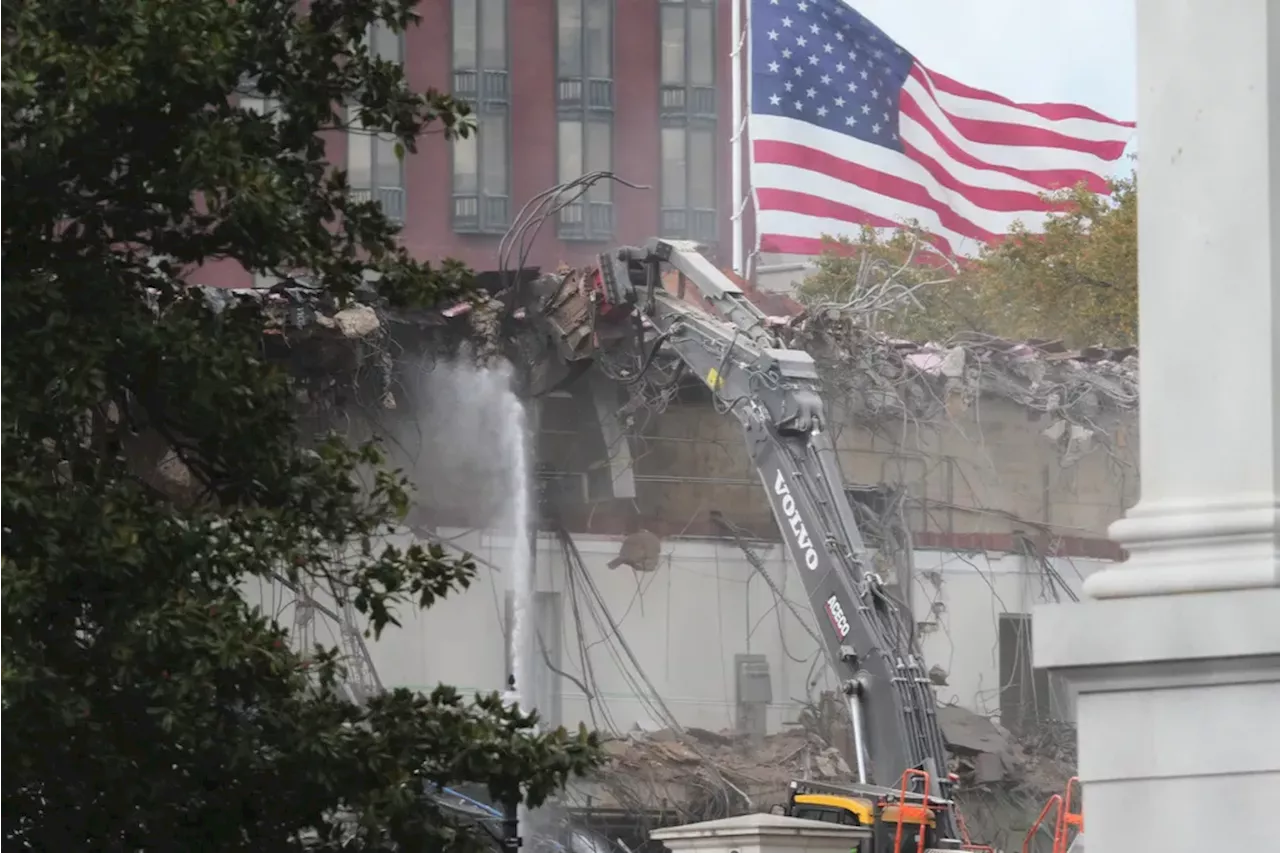Construction has officially commenced on a new ballroom in the East Wing of the White House, a move that has sparked significant outrage among various political factions. This renovation, aimed at modernizing the historic space, has triggered a wave of criticism from many on the political Left, including politicians, journalists, and social media influencers.
As work began on March 4, 2024, the backlash was swift and vocal. Critics argued that the construction represents a misguided use of resources, branding it an affront to tradition. Many have taken to platforms like Twitter to express their discontent, with some labeling the renovations as “destroying history” and “an abuse of power.” The emotional responses have garnered the term “White House ballroom construction derangement syndrome,” a phrase coined to describe what some see as an irrational fixation on the president’s renovation efforts.
The ballroom project is being funded through private contributions, a fact that has not quelled the ire of its detractors. Hillary Clinton, the former first lady and presidential candidate, voiced her opposition by stating, “It’s not his house. It’s your house. And he’s destroying it.” This echoes sentiments from critics who believe the renovations are excessive and unnecessary, reminiscent of her own experiences during her time in the White House.
Among the critics is Rick Wilson, a prominent anti-Trump commentator and executive at the Lincoln Project. Wilson expressed his dismay in a social media post, questioning the legality and appropriateness of altering such a historic structure. He has a history of making bold predictions about Trump’s political future, many of which have not materialized.
The construction has also drawn commentary from Fernand R. Amandi, an analyst for MSNBC, who attempted to connect the renovations to broader political narratives involving Russian President Vladimir Putin. His claim that the ballroom is somehow linked to manipulation and collusion reflects the heightened rhetoric surrounding the Trump administration.
Despite the uproar, the White House maintains that the renovations are essential for updating facilities that have not seen significant change in several decades. The East Wing, originally constructed in 1942, serves as a key operational hub for the first lady and houses several important offices.
Critics continue to voice their concerns about the implications of such changes, arguing that they undermine the integrity of the White House as a historical site. The National Capital Planning Commission has reportedly not yet approved the project, raising further questions about its legality and adherence to regulations governing alterations to federal properties.
As the construction progresses, the conversation around it is expected to intensify. The term “White House ballroom construction derangement syndrome” reflects a broader sentiment among some that the political climate has become overly charged, with reactions often disconnected from the realities of governance.
In conclusion, while the White House aims to modernize its facilities, the backlash illustrates the deep divisions in contemporary political discourse. Whether the construction will ultimately be viewed as a worthwhile investment or a misstep remains to be seen, but the debate is likely to continue as the project unfolds.






































































